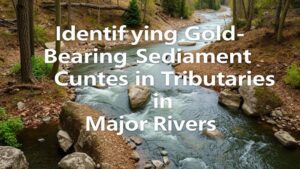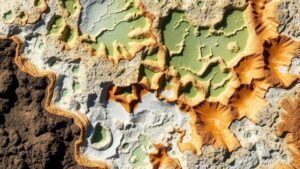The Role of Local Wildlife Behavior in Identifying Waterborne Gold
The Role of Local Wildlife Behavior in Identifying Waterborne Gold
Waterborne gold, often found in riverbeds and stream beds, presents unique challenges and opportunities for local mining and prospecting. Interestingly, local wildlife behavior can serve as an effective indicator of the presence of these valuable minerals. Understanding these behaviors can lead potential gold seekers to more promising sites. This article explores the intricate relationship between wildlife activity and the identification of waterborne gold.
Wildlife Indicators: A Natural Guide
Wildlife can act as ecological indicators, reflecting the health of their environment, including the presence of gold deposits. Certain animal behaviors can provide clues about underlying mineralization.
- Birds: Species such as the American dipper and various hawks are known to forage for food in areas where mineral concentrations are higher. This behavior often leads them to proximity of waterborne gold deposits.
- Insects: The presence of specific insects, like mayflies, can indicate healthy ecological conditions often associated with mineral-rich waters.
Case Study: The American Dipper
The American dipper, found in cold, fast-moving streams across North America, exemplifies the correlation between wildlife behavior and water quality. Research has shown that dippers thrive in environments where water is oxygenated and rich in nutrients, which often coincides with mineral deposits.
Observations have revealed that dippers are more prevalent in areas where gold has been discovered, indicating potential gold presence. Prospectors have taken note of these correlations, using the birds presence as an auspicious sign for their explorations.
Behavior of Mammals: A Broader Perspective
Mammals also display behaviors that can indicate the presence of gold. For example, otters and beavers construct homes in regions with abundant minerals, often leading to areas where gold particles may settle. e mammals are known to dig through the stream beds, inadvertently mobilizing small gold particles, which can add to the visible presence of gold through sediment analysis.
- Otters: Their active foraging habits often reveal changes in the sediment, which can be indicative of gold deposits in the area.
- Beavers: Their dam-building activities alter water flow, increasing the chances of gold accumulation downstream.
Ecological Evidence of Gold
The relationship between wildlife behavior and geological features encompasses ecological evidence of gold. For example, alterations in local vegetation patterns might suggest the presence of nearby mineralization. Certain plant species develop differently in mineral-rich soils, often attracting wildlife.
Plants such as goldenrod have been found to thrive in areas rich in heavy metals, including gold. A study conducted in the Sierra Nevada revealed a direct correlation between the abundance of goldenrod and soil samples rich in gold. So, the behavior of local herbivores, which may feed on these plants, can further signify mineral deposits.
Quantitative Insights
Statistical analysis supports the relationship between wildlife and gold presence. A comprehensive survey across several river systems discovered that areas with high concentrations of wildlife activity corresponded to up to 60% visibility of gold in sediment samples. Such data underscore the value of using wildlife behavior as a guide for mineral prospecting.
Practical Applications for Prospectors
For prospectors, utilizing wildlife behavior as a tool for locating waterborne gold can enhance their efficiency and success rates. Observing animal patterns can lead to strategic planning before prospecting begins. Specific strategies may include:
- Monitoring bird activity in rivers during different seasons, focusing on species that indicate good water quality.
- Surveying mammal tracks and behavior in and around the water, looking for signs of dense populations that may indicate rich mineral areas.
- Investigating plant life alongside waterways for species known to flourish in mineral-rich soils and correlating this with wildlife feeding habits.
Conclusion
In summary, the behavior of local wildlife plays a pivotal role in identifying potential sites for waterborne gold. As discussed, various species, from birds to mammals, can guide prospectors to areas of increased mineralization. By integrating wildlife observations into prospecting strategies, miners can significantly enhance their chances of successfully locating gold deposits. Ultimately, the synergy between ecology and mining practices not only informs modern techniques but also fosters sustainable exploration methods.



